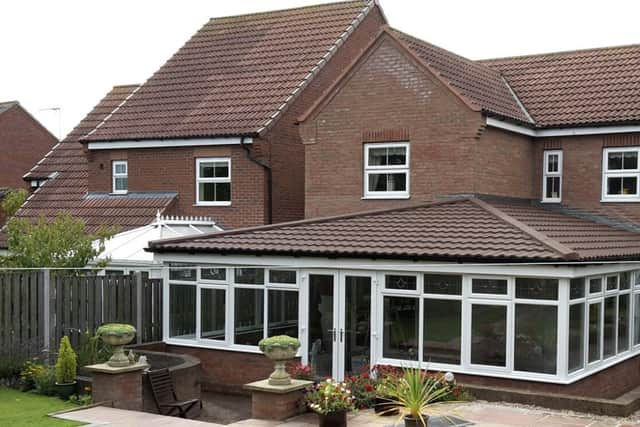How to make a dated conservatory more attractive and energy efficient
The question is what to do to solve the problems and the perceptions?
Homebuilding & Renovating Show experts, Paul Testa, who is a Yorkshire based architect, and interior designer Julia Kendell have some suggestions.
Advertisement
Hide AdAdvertisement
Hide AdPaul Testa says: “A conservatory is a primarily glazed extension to a home. It typically has a low brick plinth, but everything above this is glazed, including the roof.


“They became popular in the 1990s as a way of creating a better connection with the garden and increasing your home’s floor space with a lower build cost than a full extension and in mild weather, they can be very pleasant places to spend time in.
“The main problem with a conservatory is also its reason for being. The glazed walls and roof mean that the envelope of a conservatory isn’t very good at retaining heat so they get very cold in the winter.
“Secondly, the glazing lets in lots of solar gain in the summer, so they become uncomfortable throughout much of the summer season.”
Advertisement
Hide AdAdvertisement
Hide AdHe adds that their inefficiency is recognised in building regulations and has been for a number of years. They must now have a separately controllable heating system and an insulated door between them and the rest of the house. Otherwise, they will suck heat out of your home in the winter.
Paul admits: “I find a conservatory a hard thing to love. They are, almost without fail, built from mass produced uPVC. “They’re typically faux Victorian in style and are not built with energy efficiency in mind.
“It doesn’t surprise me that, as design has become a more mainstream interest, they have become less fashionable.”
There are, however, changes you can implement that can make conservatory more attractive and efficient. The obvious, says Paul, is to change the roof, where a big chunk of the heat is lost and also the main source of summer overheating.
Advertisement
Hide AdAdvertisement
Hide AdThe primary structure holding up the roof of a conservatory is its glazing system. This means you have to be careful when changing the roof but there is now a range of upgrade systems that offer a lightweight solid roof conversion for conservatory structures.
Yorkshire based company CRS conservatoryroofspecialists.co.uk has a good track record in swapping glazed roofs for tiled ones. Richard Brennan of CRS says: “Many existing conservatory roofs are made using glass or polycarbonate sheets, these materials have virtually no thermal properties but a tiled roof structure is robust and designed to stand the test of time.
“Our structure has been developed to put minimum stress on the existing conservatory frames, which is important. Costs start at about £7,000 for a replacement roof on a small conservatory and building regulations are required for tiled replacement roofs so make sure you or the company you choose apply for them.”
Paul Testa also suggests an insulating or reflective blind fitted snug up against the glass to improve both heat retention and reduce summer overheating.
Advertisement
Hide AdAdvertisement
Hide AdFor those who want to replace their old conservatory, he adds: “If you want to make a much more substantial performance improvement, it’s hard to get away from the need to replace the whole thing. In most cases, but not all, you may be able to keep the foundations of the conservatory and build a more substantial structure on top of these.
“You are still looking at £1,500 per m2 plus to build something, but at least the groundwork is done. If you’re considering this option, get a structural engineer involved as soon as possible to check if retaining the foundations is viable.
“If you do the replacement well, it should be a thermal benefit to the whole house and it shouldn’t lose you the visual link to the garden .”
The extension may need planning permission and it will need building regulations approval.
Advertisement
Hide AdAdvertisement
Hide AdIf you want to keep your conservatory, one way to make it more attractive, says Paul, is to get the frames resprayed in a fresh colour. You shouldn’t need permission for this unless you’re in a conservation area or the house is listed.
Interior designer Julia Kendell ssays rugs, large potted palms and plants and contemporary furniture can do wonders for how a conservatory looks and feels.
*Get more energy efficiency and interior design ideas with free tickets to any of this year’s Homebuilding & Renovating Shows at homebuildingshow.co.uk/pr-general-outlets